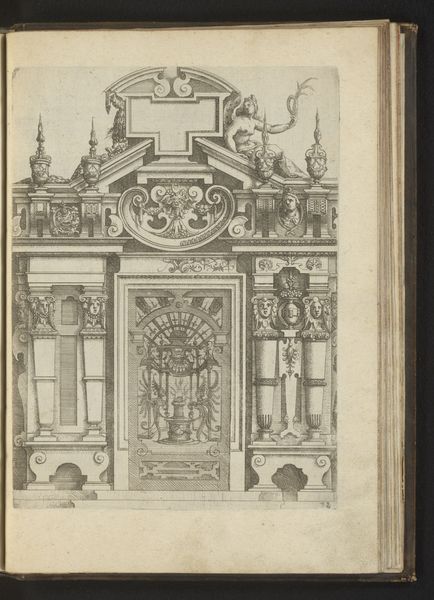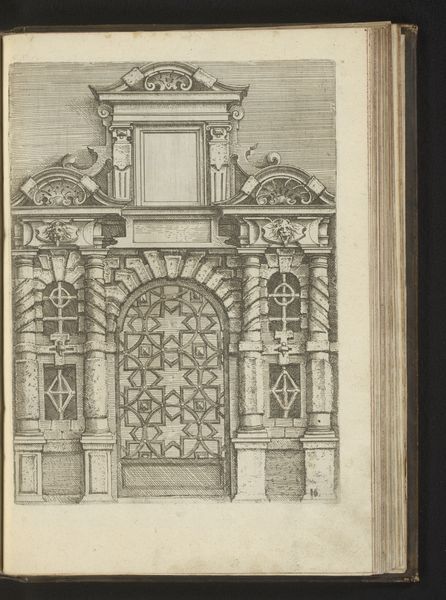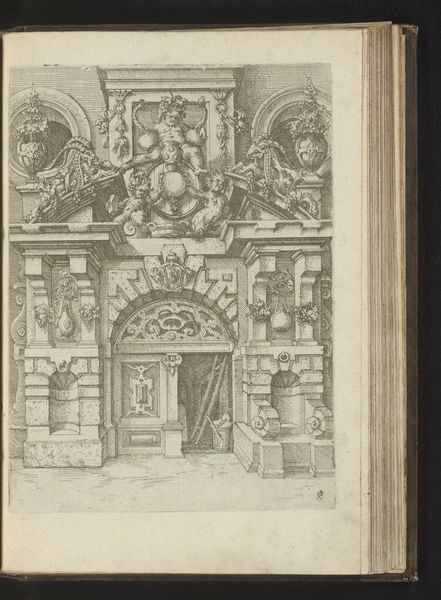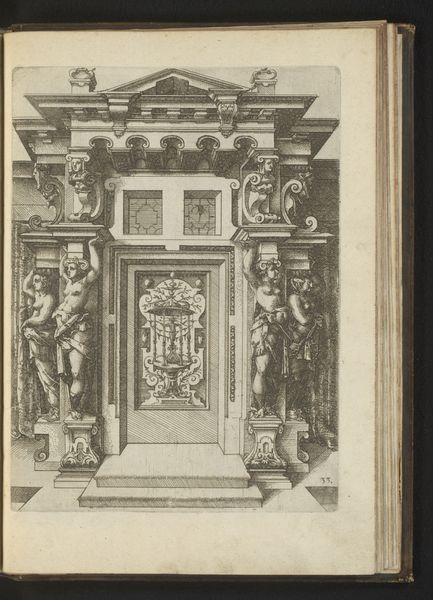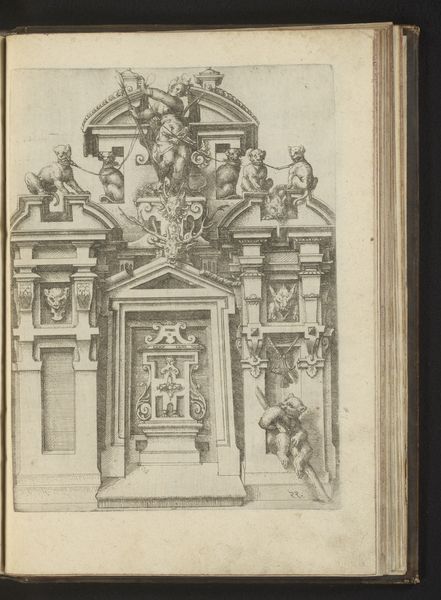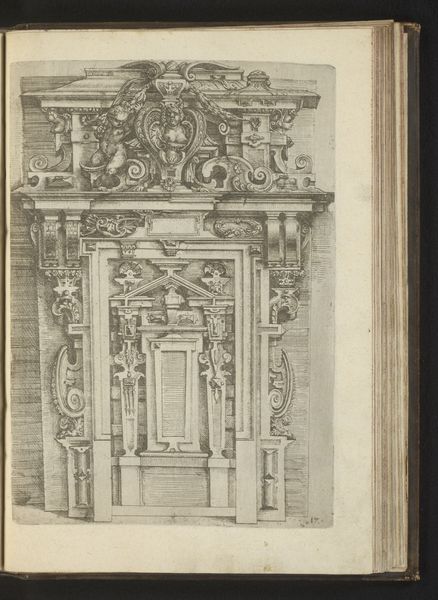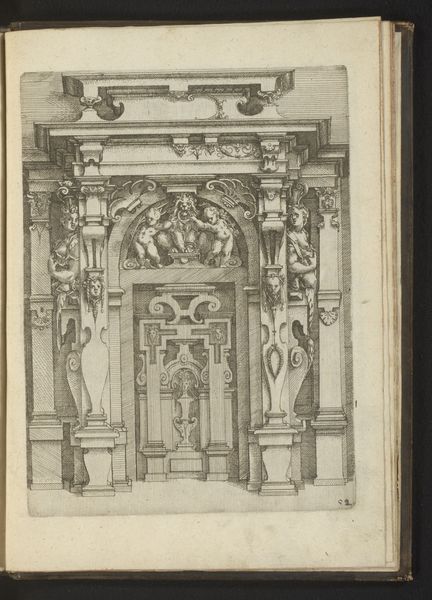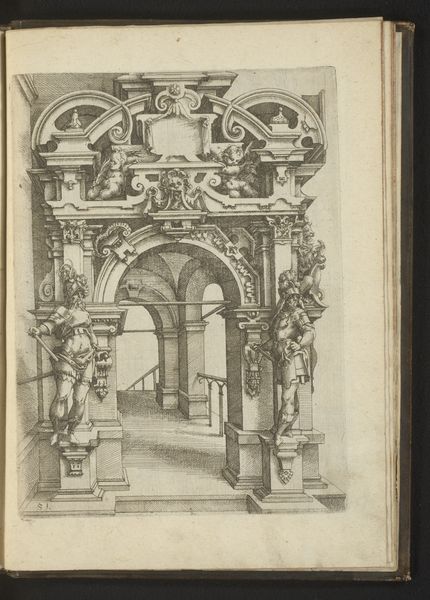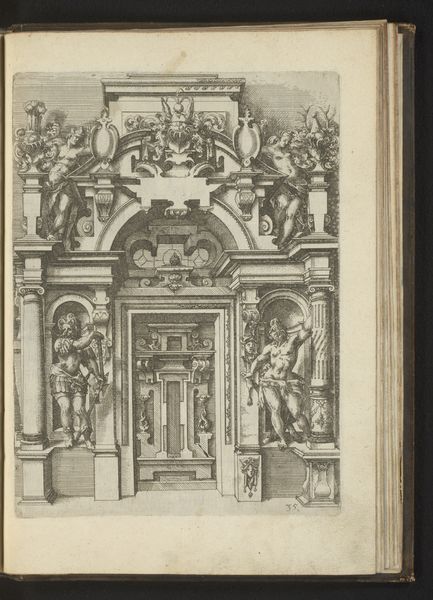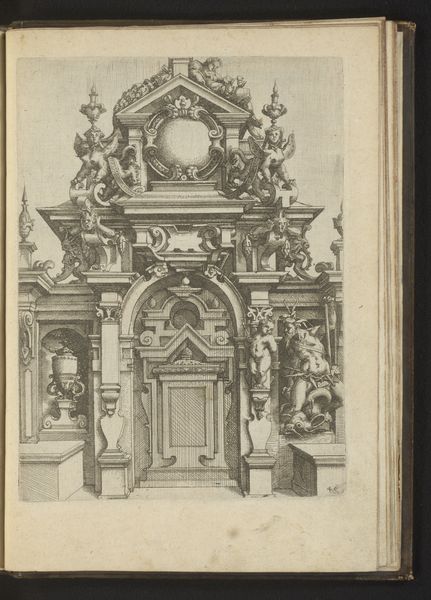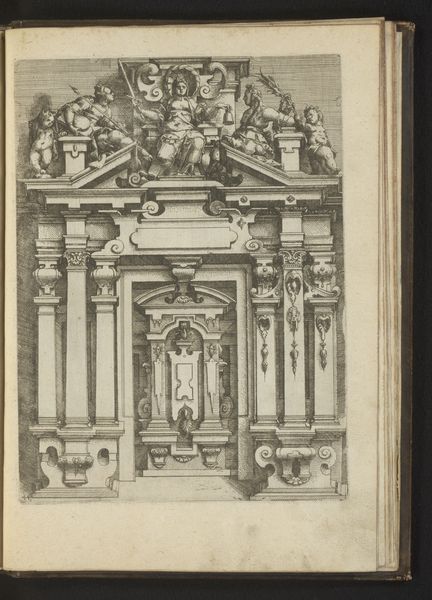
Portaal met links en rechts verschillende ornamenten, nissen en mascarons 1593 - 1595
0:00
0:00
drawing, ink, engraving, architecture
#
pen and ink
#
drawing
#
11_renaissance
#
ink
#
geometric
#
engraving
#
architecture
Dimensions: height 246 mm, width 186 mm
Copyright: Rijks Museum: Open Domain
Curator: Looking at "Portaal met links en rechts verschillende ornamenten, nissen en mascarons," created by Wendel Dietterlin I around 1593-1595, I’m immediately struck by its theatrical, almost exaggerated style. Editor: It’s dizzying! All those tightly rendered details – it gives the illusion of monumentality within the intimate scale of a book page. What was it made of? Curator: This piece is an engraving rendered in pen and ink. Considering the printing technology of the late 16th century, we can appreciate the labour and skill involved. Dietterlin was a Northern Mannerist, and we can see that interest in elaborate, often grotesque ornament pushed to the extreme. Think of the societal forces pushing visual culture during the late Renaissance; expanding economies, intensified cultural exchange and religious conflicts spurred unique directions in art and architecture. Editor: Exactly. And the architectural subject matter really situates this work in the social and political landscape of the period. Architectural prints weren’t just about aesthetics. These images are always political, projecting power, status, and sometimes aspiration for the rising merchant class. Look at the meticulously rendered grotesque masks, those unsettling faces – I find a deliberate discomfort in these ornamentations. Curator: I agree, that discomfort reflects a breakdown of classical ideals of harmony and balance. Consider who this would have appealed to: architects wanting inspiration or wealthy patrons constructing ambitious residences. I wonder what it says about them. Was it aspirational? Or was it a cautionary statement about indulgence and excess? Editor: It is interesting to consider it for whom it may have been designed and who had access to view the engraving at the time, but there are also elements that tie in with alchemy, hermeticism and astrology of that time. This opens a totally different field. Curator: Definitely, these types of pieces reflect the era's artistic experimentation and also serve as historical artifacts tied into cultural, philosophical, and religious elements that can still provoke new questions and perspectives in our day. Editor: Absolutely. Thinking about that mix of ambition and unease—it provides a compelling, lasting glimpse into the mindset of a society on the cusp of major transformation.
Comments
No comments
Be the first to comment and join the conversation on the ultimate creative platform.
